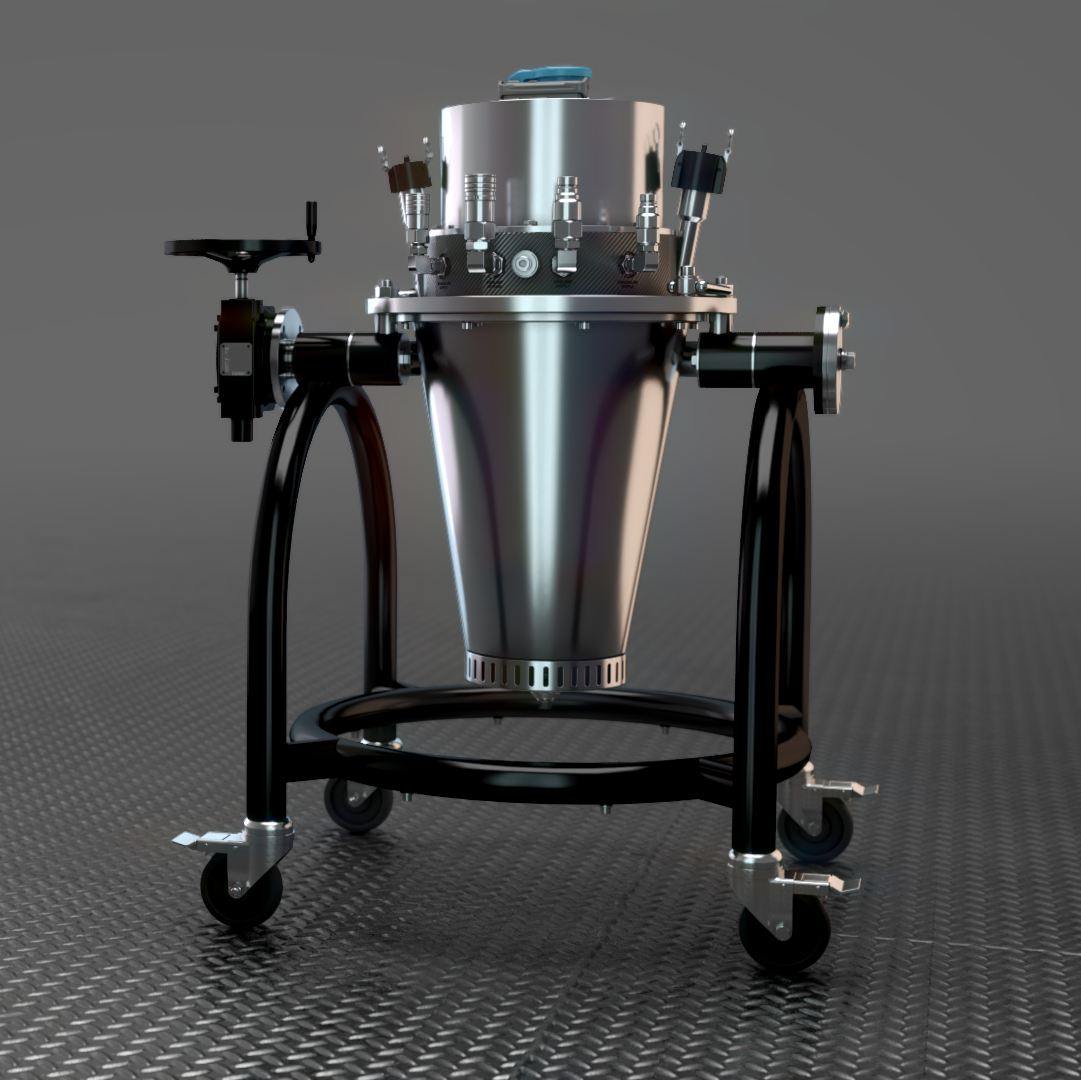

evaporators and crystallizers worldwide
industry experience since 1968
Dedert Forced Circulation Evaporators are typically used for solutions and slurries which present a risk of fouling or scaling. Fouling occurs at high temperatures and high concentrations. Scaling occurs with salts that are likely to precipitate. The forced circulation evaporator maintains a full tube, which mitigates these risks. Forced circulation evaporators have longer product residence time and higher liquid volume in the tube Forced circulation evaporators are used for a variety of applications, including:
The atomizer's simple and sanitary design features FDA-compliant stainless-steel construction and a lightweight Titanium disc. It has only one moving part, which eliminates premature wear-and-tear and reduces the need for spare parts and maintenance such as bearing changes. The rotatable maintenance stand makes servicing and cleaning easy, further reducing maintenance requirements.
The air bearing atomizer comes with an integrated control module that includes an HMI, PLC, and instrumentation for utility control. The graphical user interface provides an intuitive and comprehensive interface of the complete system and data recording for all the parameters. The product line is available in three sizes to meet the full range of industrial spray dryer capacities, from laboratory-scale applications to industrial-scale and high-volume production.
Overall, Dedert's air bearing atomizer is a significant innovation in spray drying technology, offering customers a reliable, sustainable, and easy-to-maintain solution that meets the demands of today's market and paves the way for future applications.
The following are some advantages of Dedert Forced Circulation Evaporators:


The Dedert research facility has a pilot evaporator to test products on a pilot scale and establish correct parameters and material characteristics needed for optimal design and scale-up. Dedert rental pilot evaporators are:
• Skid mounted and preassembled
• Equipped with vacuum system, pumps and motors
• Easily reconfigured for forced circulation and falling film
• Single effect steam heated
• Robust, with an evaporation capacity of 110-150 lb/h (50-70 kg/h)
• Industrial stainless-steel grade Type 316
The vapor is recompressed in the evaporator by a fan, blower, or high-speed compressor that increases both the vapor pressure and temperature before returning the recompressed vapor to the shell side of the heat exchanger where it is condensed, driving evaporation on the tube side. Capacity is controlled by modulating the fan speed with a Variable Frequency Drive, or the flow by inlet guide vanes.




This process uses waste heat in the form of dryer vapors, ethanol from distillation columns, or even hot process water to recompress the vapor. Dedert was the first to use waste dryer gas as a heating source, receiving a patent in the early 1980s for an all-in-one scrubber and evaporator, which allowed the heat exchanger to accept dryer vapors containing particulates.
The atomizer is also highly energy-efficient, with a permanent magnet motor that can achieve high power levels and disc-tip speeds, low carbon footprint, and reduced overall energy consumption.


Dedert's air bearing atomizer offers significant advantages over traditional atomizer technologies, particularly in terms of illumination of product contamination sustainability, reliability, and ease of maintenance. Its unique design features an oil-free and contact-free operation, making it suitable for use in food-grade, pharmaceutical, chemical applications without the risk of product contamination.
The atomizer is also highly energy-efficient, with a permanent magnet motor that can achieve high power levels and disc-tip speeds, low carbon footprint, and reduced overall energy consumption.
©2025 Dedert Corporation. All Rights Reserved.